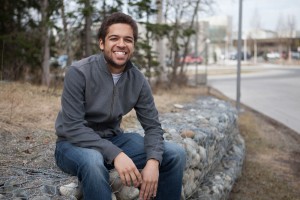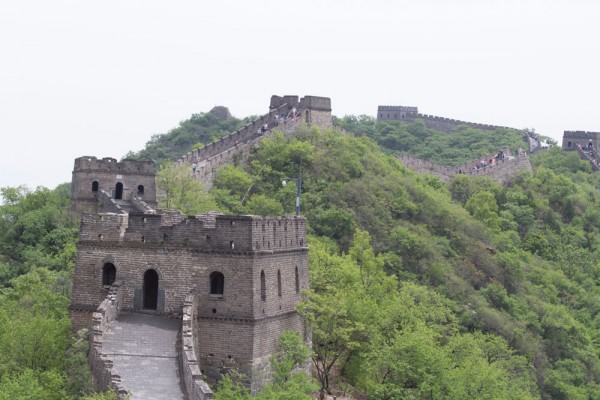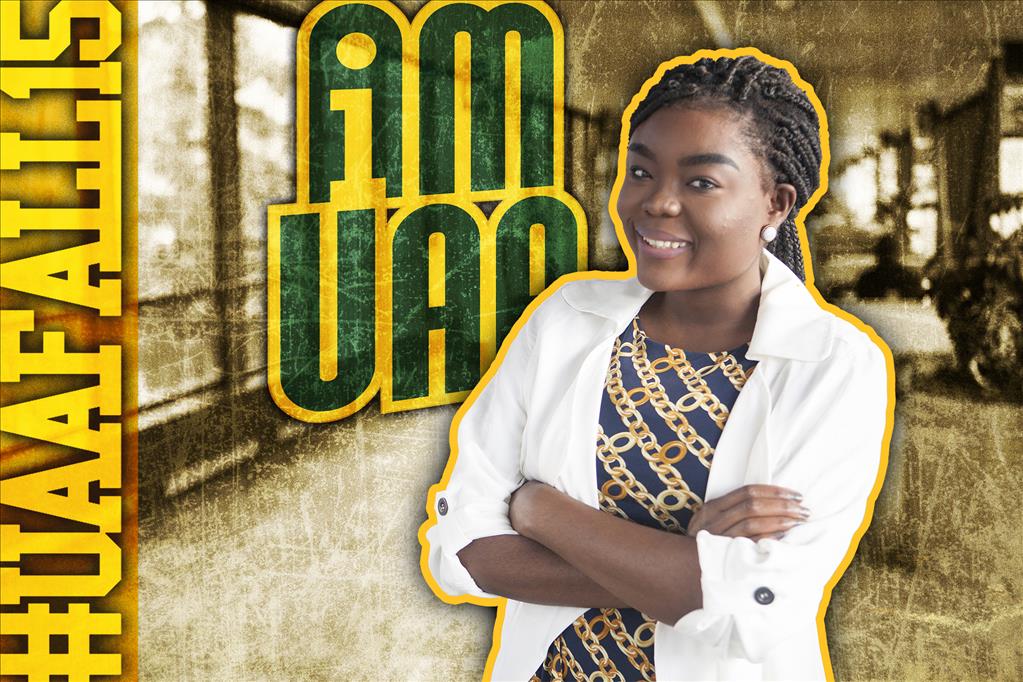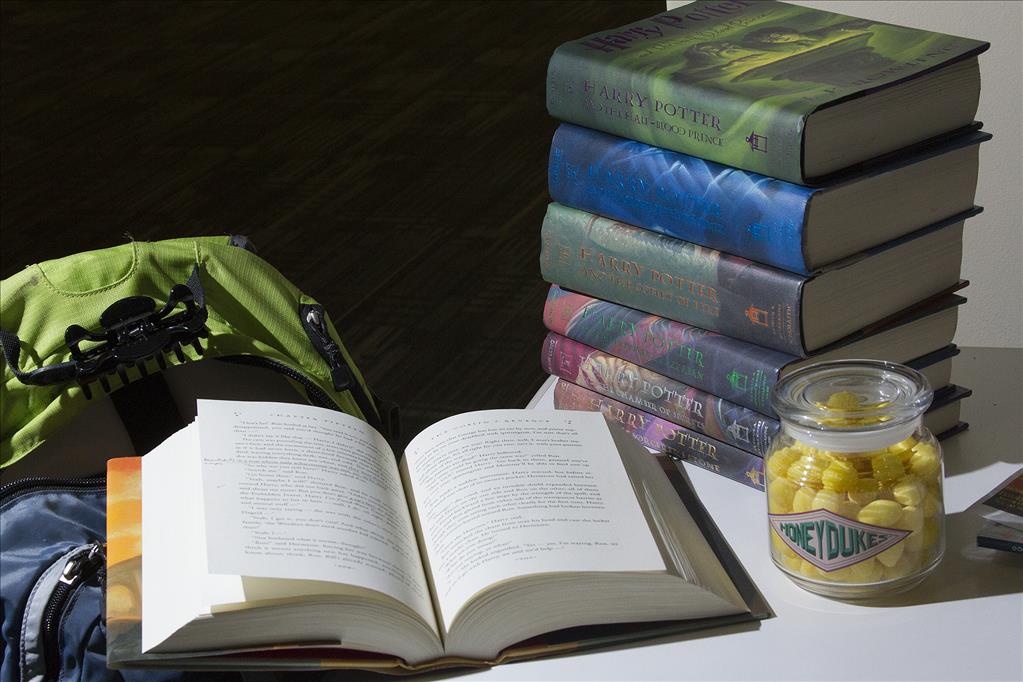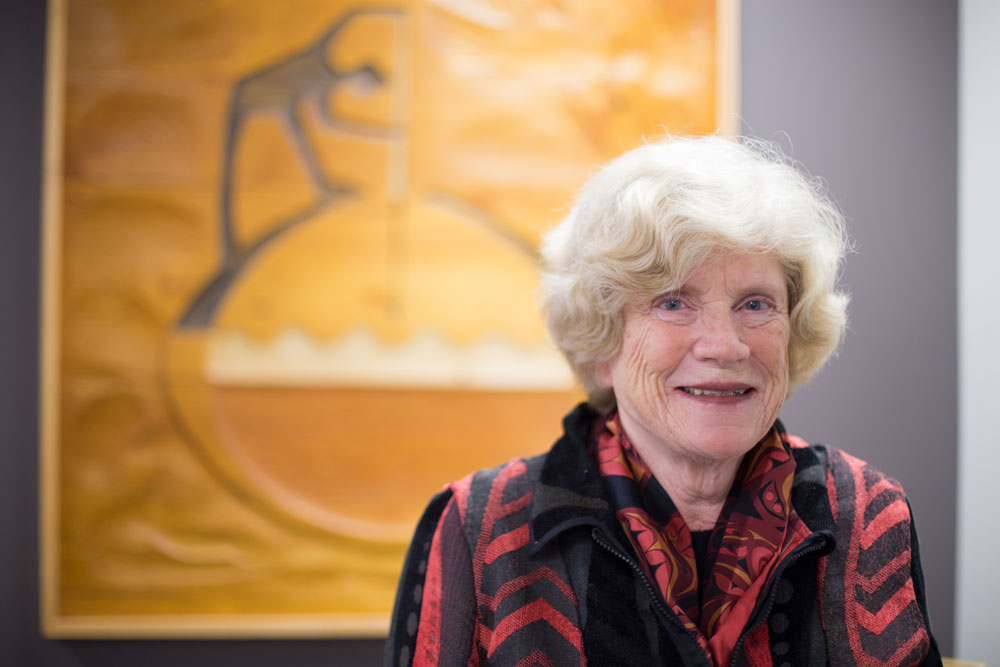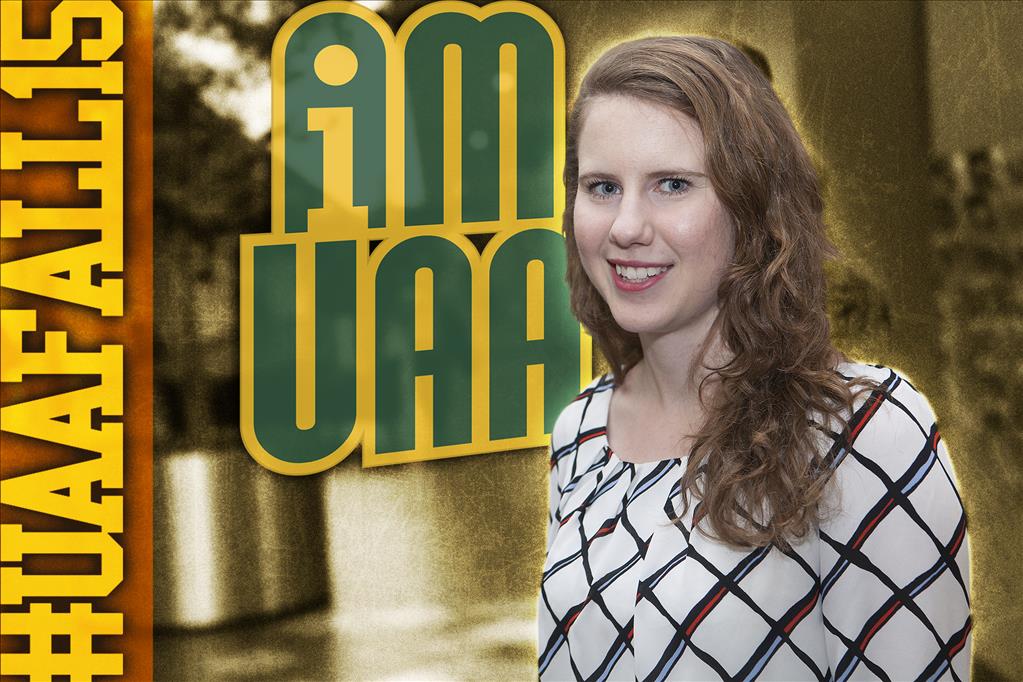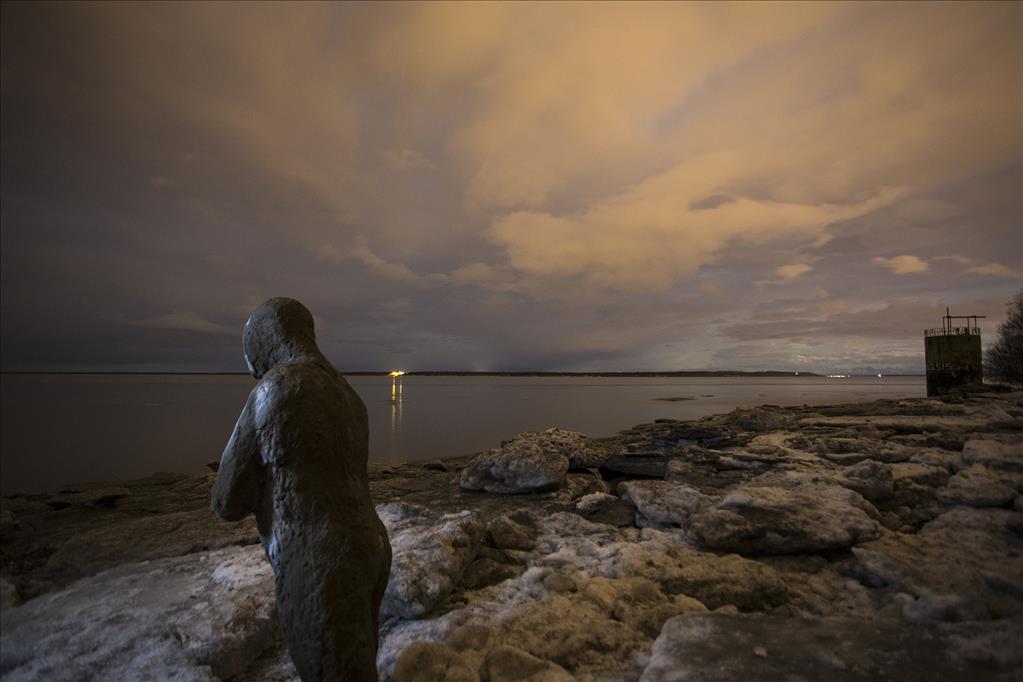Postcards Home from China: Climbing the Great Wall
by Kathleen McCoy |
Written by Wesley Early UAA Journalism & Public Communications senior
Climbing the Great Wall began at a small shop across from the hotel we were staying at. In preparation, I decided to get some bottled water so I crossed the hectic streets of Beijing to the only shop open at 6:30 in the morning. Luckily, my Chinese was sufficient enough to make the purchase. It was very cheap for the water considering the value of clean water in China. It was 3 yuan, or about 50 cents American.
However, what was the most striking about the transaction wasn't the price. In order to break my 100 yuan bill, the shopkeeper pulled out a Nike box crammed with colorful assorted bills. This man's entire cash till was in this box, and he kept it unlocked, so sure that it would be safe just tucked away to the side. It was very odd to view how relatively unsecure his finances seemed to be. While I worried for the shopkeeper, I was pleased with my Chinese and ability to effectively communicate.
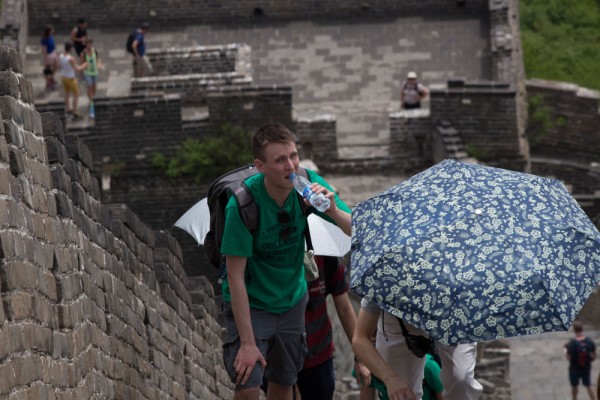
After a grueling climb, Zachary Layton cools off with some much deserved bottled water. (Photo by Wesley Early)
The water came in handy as climbing the wall proved to be brutal. Initially, I thought that taking a tram up to a section of the wall, the 16th tower, was cheating and we should have hiked up the whole thing. However, just going from Tower 16 to Tower 20 of the wall proved to be a rough enough endeavor. In fact, everything past Tower 20 was off-limits to tourists, although this seemed to be more of a suggestion than an enforced rule. The whole climb seemed like an uphill battle for 50 long, hard minutes. Hard on my quads at least. The water served as the only thing keeping me going for a large part of the climb.
Our tour guide, Gloria, told us a story about how Chairman Mao had declared once that people who managed to reach the farthest accessible tower were the only people who could be considered heroes. Man, did we feel like heroes by the end.
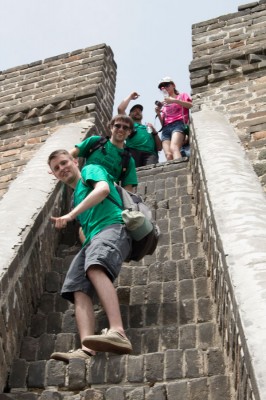
The steep steps leading up to the highest tower. Bottom left to top right: Zachary Layton, Dan Bonin, Matt Williams, Xiaoli Han. (Photo by Wesley Early)
The final climb had these ridiculously steep steps that had some of us doubting whether they were safe enough to climb. Scaling these steps was thoroughly satisfying once we reached the top and looked across the vast, winding Great Wall. Just as Flat Top is a hike in Anchorage that everyone seems to do and everyone seems to get accomplishment from, so too was scaling this massive piece of history.
The scope of the wall was magnificent and boggling to the imagination. We only traveled along about a mile of the wall, and that doesn't even begin to touch the length of the entire monument. To put things into context, the Alaska Pipeline is about 900 miles long. The Great Wall is more like 4,000 miles. And is a wall, not just a slightly over-sized tube.
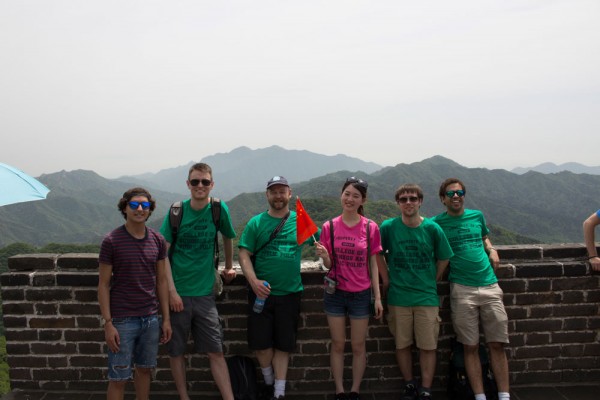
Left to right: Jacob Haworth, Zachary Layton, Matt Williams, Xiaoli Han, Dan Bonin, and Wesley Early were the only students to make it all the way to the top of the farthest accessible tower of the Great Wall. (Photo by Wesley Early)
Every minute on the wall was amazing and impossible to capture in words. Only six of the 11 of us made it to the farthest tower, but even just walking along this technological marvel is enough to make you feel that you were truly witnessing something that you would never have anything to compare to.
The most amazing fact about the entire climb? This was just the first day of our visit to China.
Wesley Early was one of nine students who traveled to China this summer as a part of an economics class dealing with globalization and business opportunities in China. Read more of their Postcards Home from China.
 "Postcards Home from China: Climbing the Great Wall" is licensed under a Creative Commons Attribution-NonCommercial 4.0 International License.
"Postcards Home from China: Climbing the Great Wall" is licensed under a Creative Commons Attribution-NonCommercial 4.0 International License.










